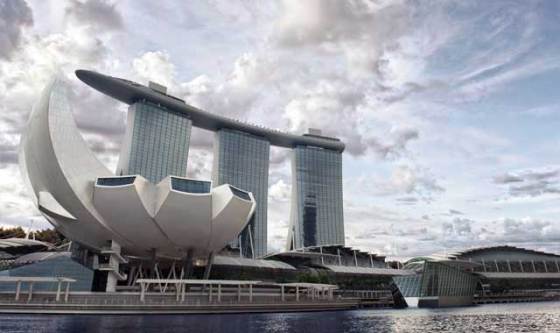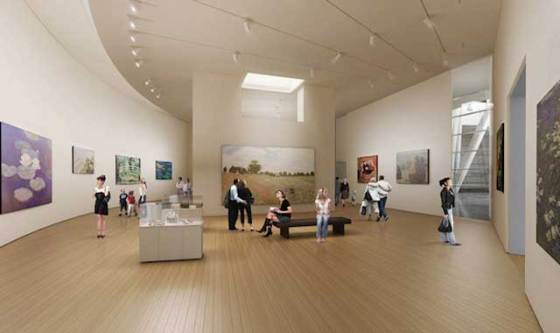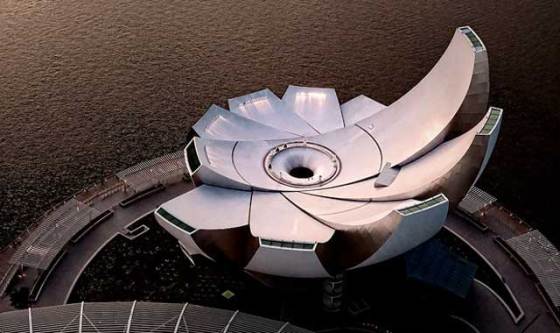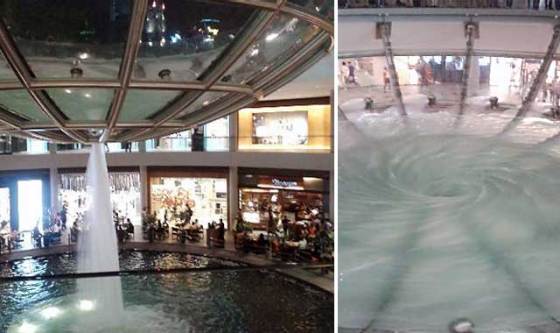Green architecture – ArtScience Museum in Singapore
 Designed as part of the Marina Bay Sands, the ArtScience Museum is the first museum dedicated to the dynamic interplay between art and science – a concept we cover from time to time in our series about art and technology. Although it doesn’t feature quite as many sustainability solutions as other projects we previously wrote about, the Museum is built to meet Singapore’s Green Mark program.
Designed as part of the Marina Bay Sands, the ArtScience Museum is the first museum dedicated to the dynamic interplay between art and science – a concept we cover from time to time in our series about art and technology. Although it doesn’t feature quite as many sustainability solutions as other projects we previously wrote about, the Museum is built to meet Singapore’s Green Mark program.
Designed by Moshe Safdie, the ArtScience Museum features 6,000 square meters (50,000 square feet) of gallery space. Their exhibition programming focuses on investigations into how the individual disciplines of fine art, scientific experimentation, media, technology, design and architecture relate to and enrich each other.
Surrounded by a lily pond reflecting pool, the museum is entered through a free-standing glass pavilion. There are three levels and large elevators and escalators convey the public to the lower and upper galleries. Visitors to the ArtScience Museum can explore the connections between the arts and the sciences through the museum’s permanent exhibition named ArtScience: A Journey Through Creativity. The exhibition features a series of galleries titled Curiosity, Inspiration and Expression. The Museum also holds activities and workshops, as well as touring exhibitions curated by leading museums and collections.
The design of the ArtScience Museum is composed of two principle parts. The base, which is embedded in the earth and surrounded by the Bay’s water and a giant lily pond, and a flower-like structure made of 10 petals, generated by the geometry of spheroids of varying radii that seemingly floats above the landscaped pond base.
The petals, or fingers as some refer to them, rise towards the sky with varying heights, each crowned by a skylight which enables the natural light to illuminate 21 galleries housed in fingers.
The asymmetrical museum structure, conceived by Arup, reaches upward into the skyline as high as 60 meters (nearly 197 feet) and is supported by an elaborate steel lattice structure which was conceived via 3D modeling. This assembly is supported by ten columns and tied down at its center by a basket-like diagrid–a sculptural centerpiece that accommodates the asymmetrical forces that the building’s form generates.
The museum’s envelope is composed of double-curved Glass Fiber Reinforced Polymer (GFRP) skin typically used at such a scale in the construction of boats and yachts. The vertical sides of each petal are sheathed in bead-blasted stainless steel panels. The use of GFRP has made possible the joint-less, continuous skin for each of the sail-like surfaces achieving a sense of lightness with their gleaming petals.
The dish-like roof form collects rainwater and drains it through an oculus, creating a 35-meter (115-foot) high waterfall through the center of the museum that feeds an interior pond. Rainwater redirected through the water feature to create a continuous cylindrical, while a part of it is recycled for use in the Museum’s restrooms.













Leave your response!